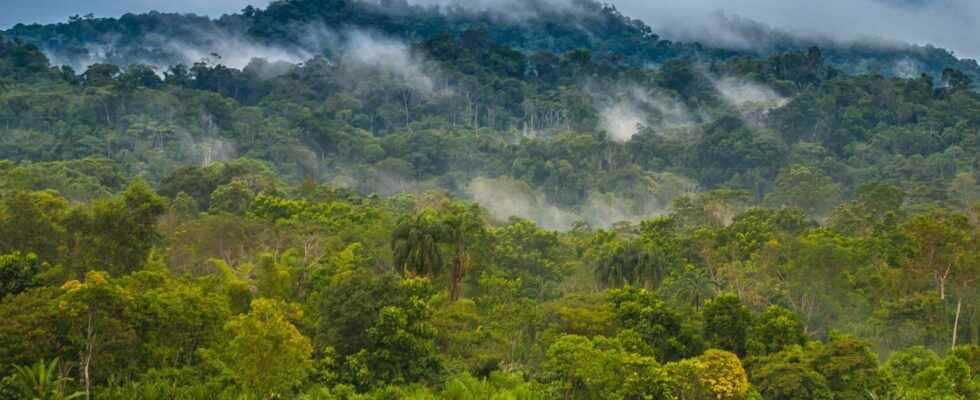You will also be interested
[EN VIDÉO] 5 clouds to recognize to predict the weather For millennia, humans have learned to predict the weather through cues from nature. Among them, clouds can give a good idea of the short-term weather.
Today, the danger posed by nanoparticles for human and animal health is well known. However, they were not previously implicated in the atmospheric processes governing the climate changebeing considered too small to interact within the clouds. However, a new study has just shown that nanoparticles Aerosols could play a significant role in rainfall cycles, particularly in the Amazon rainforest.
Clouds are formed by the growth of condensation nuclei
Rain clouds are formed by the growth of water droplets around various hygroscopic particles suspended in the troposphere. In this process, volatile organic compounds — whether of natural origin such as limonene (emitted by coniferous forests) or of anthropogenic origin such as benzene and the toluene (issued by the combustion of fossil resources) — can accumulate on other particles, including pollution particles. But to participate in cloud formationthese nuclei of condensation must reach a minimum size of 60 to 70 nanometers. However, until now, aerosol particles of less than 10 nanometers, which are produced in mass human activity, were considered too small to act as a condensation core within the clouds. They therefore did not seem capable of influencing cloud development.
However, a team of Brazilian and American researchers has just demonstrated, in a study published in the journal Science Advancesthat the processes of nucleation are not that simple.
The team relied on data obtained by plane during flights carried out at an altitude of 5 km above the city of Manaus in Brazil. This important urban center has two million residents and is surrounded by the Amazon rainforest. The aim of the study was to study the interactions taking place between aerosols and clouds both above urbanized areas but also in still virgin forest regions.
The presence of aerosol nanoparticles impacts cloud formation
The Amazon region is characterized by strong currents of convection which entrain water vapor as well as other gas to the upper layers of the atmosphere. Among these particles are the nanoparticles of pollution. However, the results of this new study show that volatile organic compounds are able to condense on the surface of these nanoparticles when the temperature is low enough, which occurs at very high altitudes. Under these conditions, the nanoparticles therefore become condensation nuclei which will gradually swell until they reach a size of 70 nanometers. From this point, they will take on water vapor and turn into a droplet. This process involving pollution nanoparticles as the condensation nucleus was hitherto unknown.
However, it appears that this association of volatile organic compounds and aerosol nanoparticles affects the formation of clouds in two different ways. On the one hand, this generates a greater quantity of light droplets, which then form clouds at higher altitudes. This process leads to a reduction in the amount of rainfall. On the other hand, nanoparticles can accumulate with each other, thus forming larger condensation nuclei. In this case, it results cumulonimbus type clouds very thick, capable of creating particularly intense rainy events. The results of the study show that the clouds affected by aerosol pollution in the Manaus region were 10 to 40% smaller and contained 1,000% more droplets compared to “unpolluted” clouds. The rainy cycle therefore seems to be clearly impacted by aerosol nanoparticle pollution.
This study shows once again that natural processes, such as cloud formation, are impacted by anthropogenic pollution. Researchers now want to look into the impact of forest fires, which emit large amounts of volatile organic compounds andnitrogen oxides. Their objective is also to study the upper layers of the atmosphere more precisely in order to better understand the processes leading to the formation of cumulonimbus clouds. A flight at an altitude of 15 km is thus planned for December 2022.
Support an editorial team committed to popularizing science on Patreon!
Our mission ? Return the knowledge accessible to everyone.
We produce our own articles, investigations and reports every day, all on a human scale. Support us in this approach and this ambition.
Subscribe to Futura on Patreon!
Two subscription plans are offered to you with the following advantages:
- ” Futura ad-free »: get guaranteed ad-free access to the entire site for €3.29/month (+VAT).
- ” I participate in the life of Futura »: in addition to access without advertising, take part in the life of our independent media (votes, new content, surveys, etc.) for €6.29/month (+VAT).
Interested in what you just read?
